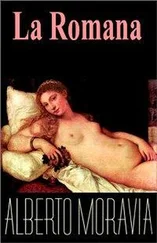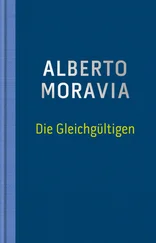The failure of Il conformista , which the author attributed, not incorrectly, to the hostility of the critics, caused a kind of depression in him, thereby rendering the second half of 1951 unproductive. He writes, in a letter dated July 20: “A great listlessness has come over me after the Italian critics’ unjust and stupid reception of my last novel. I have almost no desire to work” (Archivio Bompiani). The first interview with Festa Campanile confirms this state of mind (“I think it will take me some time to recover from this book”) as well as his diffidence toward the critics: “Most of the critics are against me; they would be happy if I were to slip on the banana peel of a misguided book.”
He seems to have gone back to work around December 1951, after two weeks in Paris, whence he wrote a Christmas letter to his editor: “I feel well again after the exhaustion of the past months, and I’ve begun to work” (Archivio Bompiani). As we can decipher from fragmentary references over the following months, between January and March 1952 Moravia worked on and off on the “very brief novel” which he later refers to in the January 8, 1952, interview and completed a first version of the book.
But work on the novel was rendered more difficult and later interrupted by financial difficulties, the leitmotif of his correspondence with Valentino Bompiani during these months. It makes sense to take these difficulties into consideration, because they have a real effect, as well as a thematic influence, on the novel. After a first alarm bell sounded in a letter dated January 30 (“I would be very grateful, given that I find myself in a tight spot, if you could speed up the payment of those five hundred dollars”), the author blames the editor for his fiscal problems on February 27:
Dear Bompiani, having declared my income, as you advised me to, I now find myself in a very unpleasant situation which, in part, I had predicted: I must pay so much in taxes that I don’t know if I will be able to pull it off. And, even if I am able to do so, I will have to begin writing for money, articles, screenplays, in other words quick projects etc., etc., etc., and no novels. Therefore I will not be able to exercise the profession for which I was born, that of writing novels. I leave it up to you to judge how useful this is to me at this time, when I could, with greater financial tranquility, have produced my best work. So be it. […] I feel that I have many things to say, important things, but unfortunately I am oppressed by material needs. When I think that Armenise, the producer of penicillin, declares a lower income than I do, it makes me laugh.
The complaints return again and again, and Moravia threatens to suspend his literary efforts in order to dedicate himself to screenplays, as in a letter dated March 18: “What will suffer will be my literary output. The taxman must be paid. So for the past two months or so I’ve been working on a screenplay and have set aside all my beloved manuscripts.” The message to the editor is clear: if you want me to write novels, you must offer more support. It is important to note how Moravia distinguishes between the literary work of the novelist and the commercial work of the screenwriter, which will later become an important structural element of Il disprezzo , set in the early years of the postwar period.
But despite his work on a screenplay, Moravia did not completely abandon his “beloved manuscripts” (by which he means both the handwritten and the typed scripts). In fact, he completed the first version of a novel, as he writes in a letter dated March 20, 1952, to Bompiani: “I have finished a short romanzetto [novella]. But who knows when I will be able to revise it and clean it up. Woe is me, I work to pay the taxman.”
Note the wording: “short novella.” This does not seem to match the “long novel” that, according to the second interview with Festa Campanile, Moravia completed in 1952, but rather the “very brief novel” mentioned in the first interview. In other words, he is referring not to one of his lengthy novels, such as La romana and Il conformista , but rather to one of his so-called novellas, such as La mascherata ( The Fancy Dress Party ) , Agostino ( Two Adolescents ) , La disubbidienza ( Disobedience ), and L’amore coniugale ( Conjugal Love ), none of which exceeded 150 typewritten pages and which Moravia would collect in 1953 in a volume titled Romanzi brevi (Short novels). (In the same letter, he refers to the English editions of Agostino and La disubbidienza as romanzetti , “novellas.”) Note also two other terms—“revise” and “clean up”—which further illuminate Moravia’s working methods. A revision refers to a complete rewriting, resulting in a text substantially different from the previous version; cleaning up, on the other hand, refers to small adjustments to the narrative and to the expressive coherence of a definitive text.
It is difficult to ascertain which screenplay in particular was draining time and energy from Moravia’s novella. According to the letter dated March 18, he had already been working on it for “the past two months or so.” In the March 20 letter he announces his departure for Paris, where he would spend two weeks at Transcontinental Film working on this particular project. On his return from France on May 2, he wrote to Giacomo Antonini, Bompiani’s man in Paris: “I spent only three or four days in Paris, and the rest of the time I was in Monfort d’Amaury, working on this accursed film with Autant Lara and a screenwriter […] I’ve been very involved movie projects lately, while also working on a short novel.” (Archivio Vieusseux)
Unfortunately, it has been impossible to establish the title of the “accursed film” by Claude Autant-Lara that Moravia was working on during this period. In the midst of his work for the movies, the literary project was advancing slowly. It would seem that in this letter he is referring to revisions of the “brief romanzetto ” he had completed in March; in other words, Version B.
In order to fully reconstruct the months between April and July, we must recall two important, connected episodes. First, the publication in April of the volume of collected stories ( I racconti ), which Moravia would have seen on his return from France and which constitutes the first volume of the Opere complete , with its blue and black dust jackets. And, perhaps more important, the Church’s condemnation of Moravia’s entire oeuvre, which, along with André Gide’s, was placed in the Index of Forbidden Books maintained by the Congregation of the Holy See, with a decree published in the Osservatore romano newspaper on May 27. This ban would be removed only in 1966, after the abolition of the Index during the Second Vatican Council. The ban would cause intense public discussion and a general feeling of solidarity toward the author, especially in cultural circles. This support would be translated into an award, the Premio Strega, for I racconti in July of the following year, and Moravia’s subsequent liberation from economic worries and the need to work in the film industry. The day after the Strega award ceremony, Moravia left for Sorrento and Capri, where he planned to “finish preparing the novellas for the second volume of the complete works,” as he wrote to Bompiani on July 15. It is possible that the project of collecting his four earlier romanzetti or “brief novels” ( La mascherata, Agostino, La disubbidienza , and L’amore coniugale ) was somehow connected to his work on the mysterious new romanzetto , which would have become the fifth work in the collection.
Читать дальше












